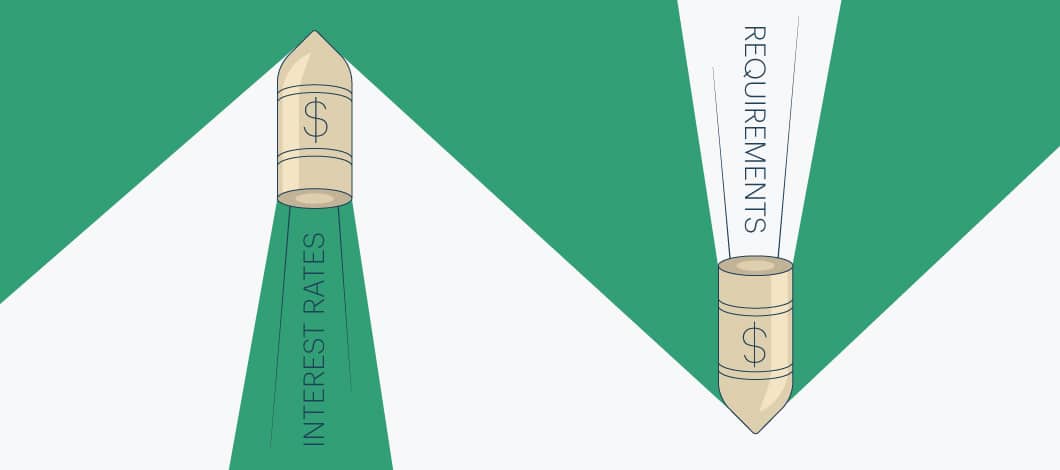If you’re looking to finance your small business with a quick infusion of cash, one option to consider is a bullet loan.
They can be an attractive option if your business needs cash now, but by definition, carry some financial risks that can increase your future debt.
To help mitigate risk while still taking advantage of the benefits of this financing tool, here’s what you need to know about bullet loans, how they work, when it makes sense to use them and how to avoid potential problems.
What Is a Bullet Loan?
A bullet loan — sometimes called an interest-only or balloon loan — is distinguished from other types of financing products by the final payment requirement when it reaches maturity.
With a bullet loan payment, repayment for your loan’s principal is delayed until the end of the term, when you must make a lump sum payment covering any unpaid amount. This brings up one of the biggest reasons why a business might turn to bullet financing: Structuring repayment this way lowers monthly payments.
A bullet loan can be used in several forms of financing, including:
- Mortgage
- Note
- Bond
- Other types of credit
Because of the high, deferred payments, bullet loans are generally considered best for short-term lending situations.
When you apply for a bullet loan, you get evaluated through an underwriting process just as you would for a regularly amortized option. They can be secured or unsecured. If you qualify, you’ll be approved for a maximum principal amount.
Bullet Loans in Use
Bullet loans are particularly favored by real-estate developers. This strategy can be used to develop anything from a single tract of land to an entire subdivision.
-
A Bullet Loan Example
A real-estate development company could use a bullet loan to purchase an undeveloped tract of land that has low collateral value. The company can use the funding to develop the land, giving it a significantly higher collateral value.
The developed property can then be used as collateral to refinance the bullet loan payment at the end of the term.
A business might take out a bullet loan to finance the construction of a new facility. Once the facility has been completed, the finished building can be used as collateral to refinance the bullet term loan.
Another example is equipment financing: You could use the funding to purchase new equipment, and then use that equipment to generate revenue that can be put toward the bullet payment or putting the company in a position to refinance.
How Does a Bullet Loan Work?
With the majority of bullet loans, you pay accruing interest throughout your term. The total principal must be paid at the loan’s maturity, known as the bullet payment, unless you refinance the loan.
If your research has turned up references to a balloon payment and you wonder which is better, balloon payment vs. bullet payment, note the terms are often interchangeably used. Each term refers to the sizeable (or ballooned) amount of money due at bullet maturity.
With some plans, you delay repaying both principal and interest until the maturity date. This repayment plan, known as a full-lump-sum bullet loan, increases the amount of interest that accumulates over your term, resulting in a significantly higher balloon payment.
Common Bullet Loan Terms
Bullet loans have distinct terms because the repayment is unique.
Repayment length is short term; usually not exceeding 5 years. However, interest can be based on an amortization calculation of up to 3 times the length of bullet maturity, raising the total you’ll pay.
Payments are based on the terms of your loan and the type of structure you’re under. They’ll be set monthly, annually or deferred to a single bullet payment.
Calculations are made on the assumption that you won’t be pre-paying any of the principal balance. This increases the total interest that accrues because the rate is applied to a constant, high number.
What Happens at Bullet Maturity?
Because the lump sum of a balloon payment can be steep, borrowers who use bullet loans commonly refinance them at the end of the term. The initial principal enables the borrower to obtain access to the capital they need to finance their business.
They can then take advantage of the low interest-only payments and devote their finances to their business until the maturity date. This puts them in a position to refinance at the end of the term.
Some bullet loans have an interest-reset option at the end of their term. This resets the interest rate based on what you’d currently qualify for, thus recalculating bullet payments based on the new terms. For borrowers who don’t have an interest reset option, they must either refinance or be forced to pay the full principal at one time.
-
Bullet Repayment vs. Amortization Repayment
When borrowers approach bullet maturity and a sizable bullet debt payment looms, they sometimes refinance their loan to have an amortization repayment schedule.
With conventional amortized loans, you follow a schedule of regular payments against principal and interest until they’re fully repaid at the end of your term. (Examples of this include a 3-year car loan or a 15-year fixed mortgage.)
A monthly or weekly amortization repayment will be higher compared to the bullet payment, but borrowers won’t be faced with a large principal payment at the end of the bullet loan term.
The Pros and Cons of Bullet Payment Plans
While bullet term loans feature attractive advantages, they carry big risks compared with conventional financing options. Weighing the pros and cons will help you decide whether they’re the right choice for your small business.
Pros
Qualifications
Because of their shorter terms and risky nature, bullet term loans can be easier to qualify for than those with more favorable terms to the borrower, such as business term loans.
Lower Initial Payments
A bullet loan’s deferred principal payment feature makes it useful for short-term financing when you aren’t expecting an immediate increase in cash flow. This can allow you to take out a loan you couldn’t otherwise afford.
Choice to Refinance
In certain situations, you can refinance to a loan with normal amortization at the end of your term. This could work to your advantage if you used the original bullet loan to give you the extra capital or collateral to qualify for a new, low-interest option.
Cons
Unfavorable Terms
With more relaxed qualification requirements come higher interest rates. Because of the volatility of a lot of the borrowers and their projects, lenders have a higher risk and must make it worth their investment. Your lower payments also mean less cash flow to the lender, so they offset that by hiking up rates.
Market Changes
If interest rates rise significantly before your maturity date, you may have to go through the qualifying process all over again to refinance. This can be time-consuming, and it may mean you end up refinancing at a higher interest rate than before.
Large Balloon Payments
The most serious risk bullet loans carry isn’t being able to repay or refinance the lump sum at the end of the term. This makes it imperative that you’re sure that you can fully repay or refinance your debt before taking out this type of loan.
Bullet Loans and Your Small Business
A bullet loan plan can be an effective way to infuse your business with a large amount of available cash. This can be useful for purposes such as constructing or buying a new facility, as well as making a purchase that can bring in large amounts of revenue.
However, it places a burden on you to repay or refinance a large amount at the end of your repayment term. This carries the risk of leaving you unable to pay off your debt, potentially putting you and your small business in jeopardy.
A bullet repayment plan can be a great way to get the cash your business needs now. Make sure you’re confident in your ability to meet your repayment obligations before applying.












